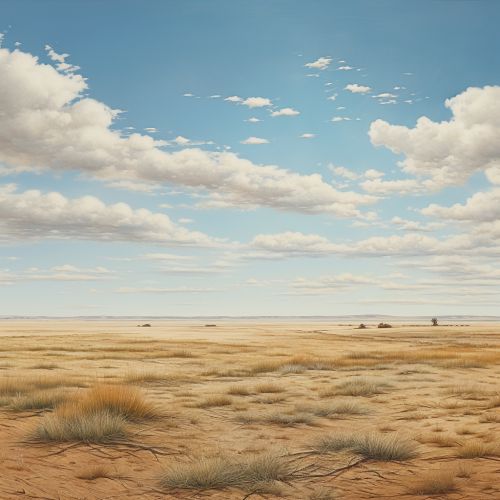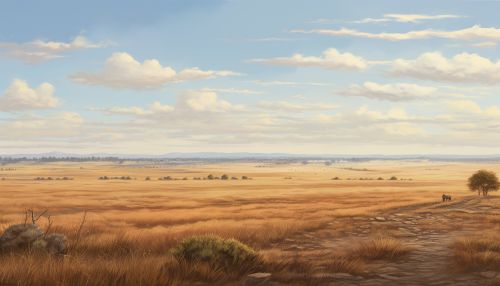Beringia
Overview
Beringia is a term that refers to a region encompassing parts of present-day eastern Russia, western Alaska, and the Yukon territory in Canada. This region, during various periods of the Quaternary period, was exposed as a result of lower sea levels and formed a land bridge connecting Asia and North America. The name "Beringia" is derived from the Bering Strait, which separates Russia and Alaska today.


Geographical Features
Beringia was not merely a narrow, barren strip of land. Rather, it was a vast, flat, and largely treeless region, with a harsh, cold climate. The land bridge was about 1,600 kilometers wide at its greatest extent, and covered an area of approximately 1.6 million square kilometers. The terrain was largely tundra, with some areas of steppe and, in the southernmost regions, boreal forest.
Geological History
The formation and disappearance of Beringia were primarily driven by changes in sea level associated with glacial cycles during the Quaternary period. During periods of glaciation, when large amounts of water were locked up in continental ice sheets, sea levels dropped, exposing the Bering land bridge. Conversely, during interglacial periods, when the ice sheets melted, sea levels rose and the land bridge was submerged.
Flora and Fauna
Despite its harsh climate, Beringia supported a diverse array of plant and animal life. The region was home to a variety of large mammals, including mammoths, mastodons, and saber-toothed cats, as well as smaller animals such as rodents and birds. The plant life in Beringia was dominated by grasses and sedges, with some areas of shrub tundra and, in the southernmost regions, boreal forest.
Human Migration
Beringia played a crucial role in the peopling of the Americas. It is widely believed that the first humans to inhabit the Americas migrated from Asia across Beringia during the last glacial period, around 20,000 years ago. These early inhabitants, known as the Clovis culture, are thought to have followed herds of large mammals across the land bridge and into the Americas.
Recent Research
Recent research has suggested that Beringia may have been a refuge for plant and animal life during periods of extreme cold in the Quaternary. This theory, known as the "Beringian Standstill" hypothesis, proposes that a population of humans may have lived in Beringia for thousands of years, isolated from the rest of the world by ice sheets to the east and west, before eventually migrating into the Americas.
